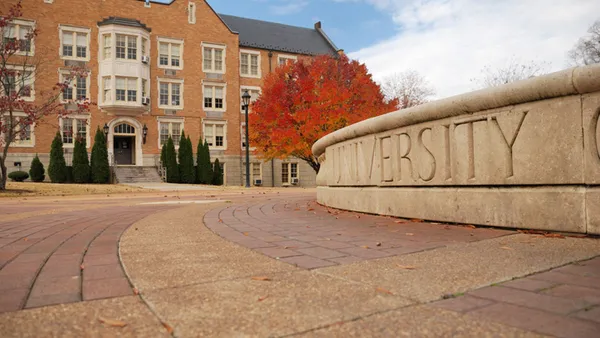Dive Brief:
- Private nonprofit colleges discounted tuition more in the 2023-24 academic year than ever before, rising to an average rate of 56.1% for first-time, full-time students, according to preliminary estimates from the National Association of College and University Business Officers.
- That’s up from 54.8% during the prior academic year, marking years of steady increases. Projections show the discount rate for all undergraduates also ticked up to 51.9% in 2023-24, rising from 50.8% in the previous year.
- Meanwhile, net tuition and fee revenue from first-time, full-time undergraduates fell by 1% in the 2022-23 academic year after adjusting for inflation. This decline comes after a whopping 5.4% decrease in this revenue source in the year before, according to NACUBO.
Dive Insight:
NACUBO’s latest study, based on a sample of 325 private nonprofit colleges, shows at least a decade of steadily climbing tuition discounts. Kara Freeman, NACUBO’s president and CEO described tuition discounting as a key strategy to make private college affordable for students and their families.
“This year’s study shows that while institutions continue to deal with economic and pandemic-related headwinds, affordability remains a priority as they work to put higher education within reach for their students,” Freeman said in a statement.
However, some higher education experts have criticized how colleges communicate their prices to students.
Phillip Levine, a nonresident senior fellow at The Brookings Institution, argued recently that college sticker prices are “an increasingly poor indicator” of the prices students actually pay. Although listed tuition rates have continued to climb at private institutions over the past decade, the net price of college — what students actually end up paying — has leveled off, Levine found.
“Our current system of setting and communicating college prices simply does not work,” Levine wrote in an April report. “We cannot expect students to make sound decisions regarding educational investments if they do not understand how much college will actually cost them.”
Indeed, few families pay college sticker prices. NACUBO’s latest study found that 83% of undergraduates received institutional grants in the 2023-24 academic year, up slightly from 82.8% the year before.
Colleges use several sources to provide institutional aid to their students. In the 2022-23 academic year, 53.3% of institutions grants were funded from undedicated sources — meaning it comes from general funds, unplanned contributions and other sources — along with colleges going without those tuition dollars, according to NACUBO.
Institutions funded another 30.3% of institution aid through college reserves, 11.3% through endowment withdrawals and 5.1% through gifts or fundraising.
NACUBO polled colleges about the strategies they plan to use to boost enrollment. Nearly two-thirds of respondents, 61.2%, said they’re using new retention efforts, followed by 57.5% that are focusing on financial aid and 56.6% that are expanding recruitment methods or exploring new strategies.
A little under half of respondents, 44%, said they’re changing or adding academic programs.















